With their cuddle-worthy coats, it’s little surprise that people can’t resist super-fluffy dog breeds.
Ranging in size from teeny-tiny to titanic, these fuzzy Fidos come from around the world and have filled many jobs throughout history besides professional cuddle buddy.
Check out some of our favorite fluff monsters and learn more about owning a fluffy dog before adding one to your fur family.
Fluffiest Dog Breeds: Key Takeaways
- While most dogs have short to medium-length hair, there are several extremely fluffy breeds available for folks who like long-haired doggos.
- Extra-fluffy dogs often require a bit more maintenance than dogs with shorter fur, and they are also more likely to trigger allergic reactions in susceptible people.
- A few of the fluffiest dog breeds include Tibetan mastiffs, pomeranians, and chow chows, but we’ll share 19 breeds in total.
The Fluffiest Dog Breeds
From wooly working breeds to luxurious lap dogs, here are some of our favorite floofs.
1. Tibetan Mastiff
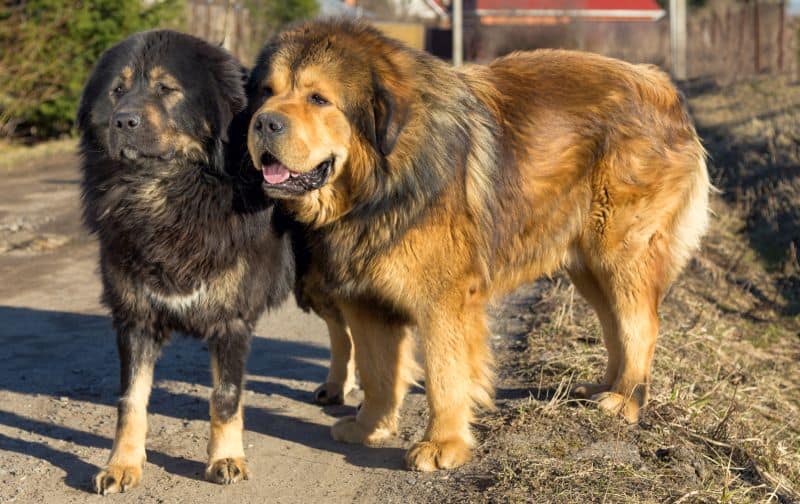
Behold, the fluffiest of floofs! The Tibetan mastiff is one of the largest dogs breeds in the world, sometimes clocking in north of 150 pounds.
Originally bred as a livestock guardian, these mighty mastiffs are members of one of the oldest recognized breeds, and they thrive in cold weather.
His massive double coat turns heads everywhere he goes, with his thick mane giving him a lionlike look. He sheds heavily twice a year but only requires brushing a few times a week to stay his handsomest.
Now, while the Tibetan mastiff is a sight to behold, he’s not for novice owners by any means. He’s a large, powerful dog with an independent streak that’s even larger. He will challenge you frequently and should never be trusted off leash.
Early socialization and training are musts, but don’t expect him to always listen the first time around.
He isn’t particularly fond of other dogs or strangers, either. As a guardian at heart, he’s protective of his family, but he can be too big to interact with small kiddos.
For his size, he’s a relatively healthy pup, and he only needs moderate exercise that can be satisfied with backyard play or a daily walk.
2. Keeshond
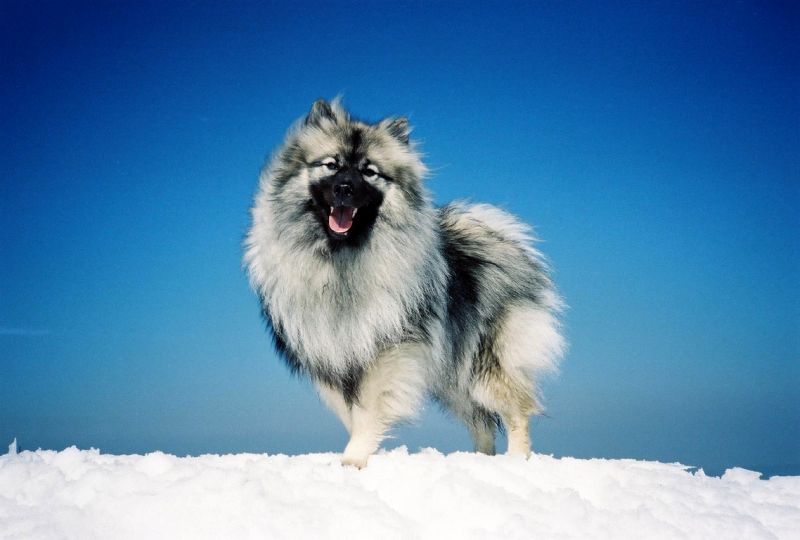
A midsize spitz with a foxy face, the Keeshond has a plush pelt of wooly fur.
Bred as a guard dog and companion for Dutch barge captains, Keeshonden (the plural of Keeshond) are tough cookies, though their fuzzy fur needs brushing a few times a week to keep its dense undercoat free of mats.
His waterway roots make him a happy-go-lucky pup that doesn’t require much space, but he needs regular exercise to look and feel great.
Keeshonden are popular picks for novice owners, as they’re eager to please and friendly, making them relatively easy to train and agreeable with most situations. He is a smart pupper though, so keep him entertained so he won’t get into any trouble.
Keeshonden are excellent family dogs and friendly with other pets as long as they’re socialized early on.
3. Samoyed
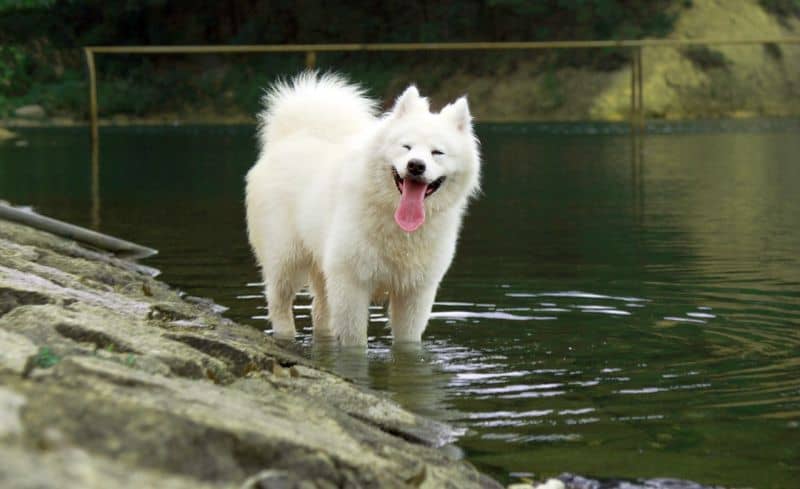
This sled dog with a snow-white coat is one beautiful dog breed. Samoyeds are downright adorable with their pricked ears, black nose, fluffy coat, and “Sammy smile,” that their owners love.
All together, it gives this smiling pupper a stuffed animal look. Hailing from Siberia, these beautiful dogs have a thick coat that keeps them warm in sub-zero temperatures but can be a problem in warm weather.
Samoyeds shed frequently and need brushing several times a week to maintain their coats’ good looks.
Samoyeds are personable and thrive in family environments. They love adventure and can be great hiking companions. This on-the-go life satisfies their energy needs, otherwise a long daily walk is recommended.
Samoyeds get along great with other dogs, but you should enroll yours in a training class early, as they’re very independent. With that in mind, they aren’t a good breed for beginners. They’re also pretty expensive pups, which discourages many would-be owners.
4. Newfoundland
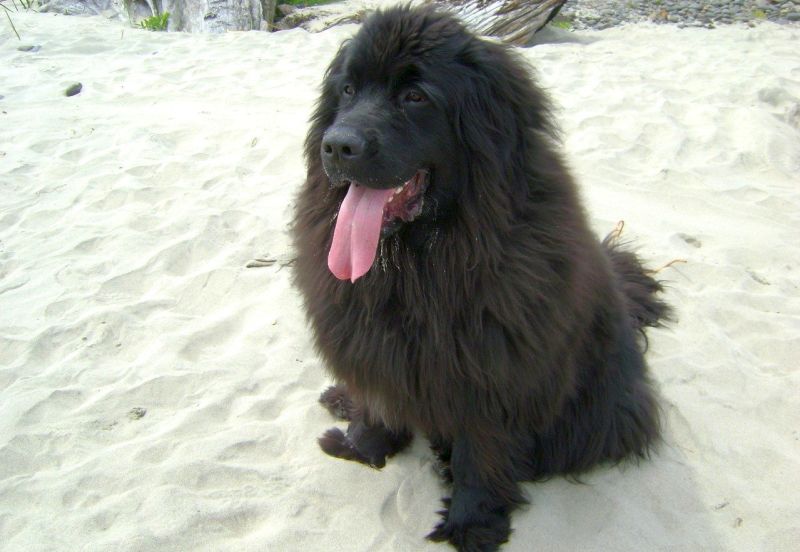
This hefty working breed is the definition of a gentle giant. Newfoundlands, or Newfies, are beloved for their friendliness and make excellent family dogs.
He’s a hero, too, as the breed was originally bred for water rescue in Canadian waters.
In turn, the Newfie is a powerful swimmer and loves nothing more than hopping in whenever he sees water. In fact, if you look closely, you’ll even see that these dogs have webbed feet! This exuberance combined with his size makes puppy obedience classes mandatory.
He has a dense coat that comes in several colors, though black is the most common shade. He’s a heavy shedder that needs weekly brushing with a hefty grooming brush, but this is bumped up to daily grooming during the twice-yearly shedding seasons.
Newfies and Newfie mixes require a moderate amount of daily exercise, and while they’re gigantic, they’re relatively easy to train, which is a good thing for people interested in the breed — they’re actually not a bad choice for novice owners who want a HUGE dog.
Be warned, however, as these big teddy bears drool.
5. Bichon Frise
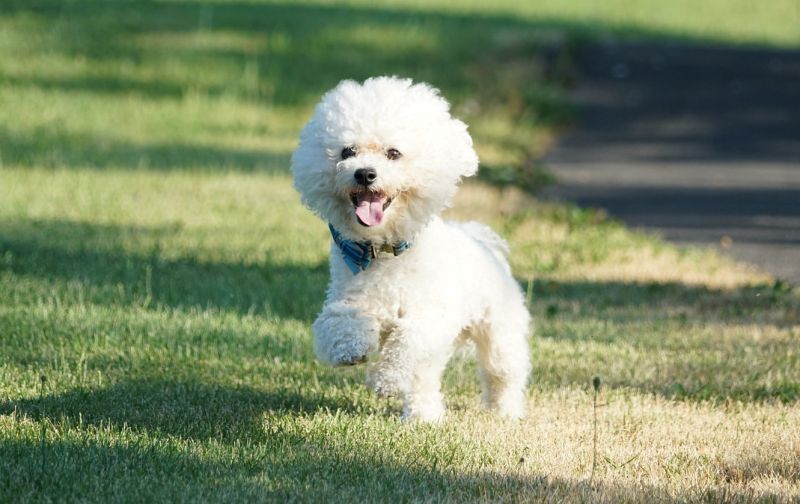
The bichon frise is a small powderpuff of a pooch. These clownish canines were bred as companions, and to this day, they remain a favored lap dog around the world.
Bichons are incredibly friendly and easy to train, making them the perfect dog for novice owners. He’s sensitive, so make sure you’re gentle in training to keep his delicate spirit intact. Just keep things positive and he’ll thrive.
Bichons and Bichon mixes are some of the best small dogs for kids, but you’ll need to monitor them closely because of their small size. They require daily exercise, though you can satisfy this with indoor play and a walk if you live in an apartment.
As for his coat, it’s the only tricky thing about him. Grooming is a must, as his curly canine coat needs brushing throughout the week and should be professionally clipped every four to six weeks to maintain its health.
6. Maltese
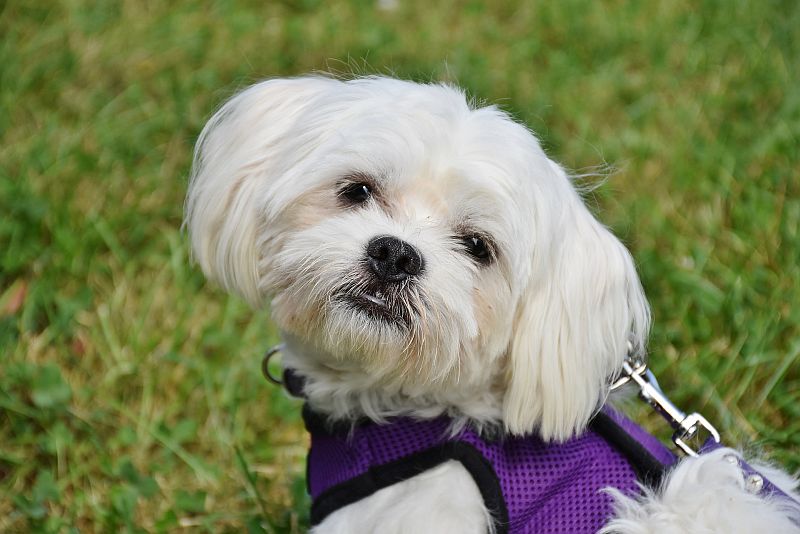
A small white puff of a pup, the Maltese is a treasured companion.
His long coat doesn’t shed much, but it requires daily combing to prevent matting. You can make grooming easier by keeping his coat short, however.
He’s a good pick for apartment life since he needs little exercise beyond indoor play and a walk for fresh air.
Maltese and Maltese mixed breeds are very sweet dogs that adapt to any situation, which makes them good for life with older children. But rough play can hurt him, so he’s not for families with small kids.
He’s best-suited for dog owners with some experience. He likes to please his owner, but sometimes he likes to do his own thing, too.
7. Coton de Tulear
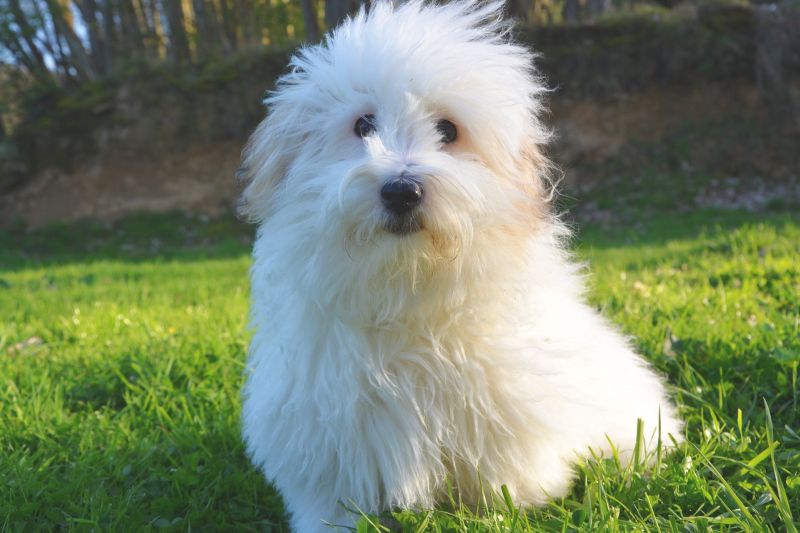
Looking more like a cloud than a doggo, the coton de Tulear is prized for his cottony soft coat and cheerful spirit. Cotons are an excellent choice for newbie owners, as they’re naturally friendly and easy to train.
He loves nothing more than being by your side. This makes him prone to mischief if he’s left alone for long. You can keep your coton happy by tiring him out with a daily game of fetch and making sure he gets plenty of time with you.
Prospective owners should be ready and able to provide daily grooming, even if his beautiful coat is kept short. Coton coats tangle easily and need daily combing from head to tail.
While he is small, he can live in a family setting as long as your kiddos know to treat him with respect.
8. Chow Chow
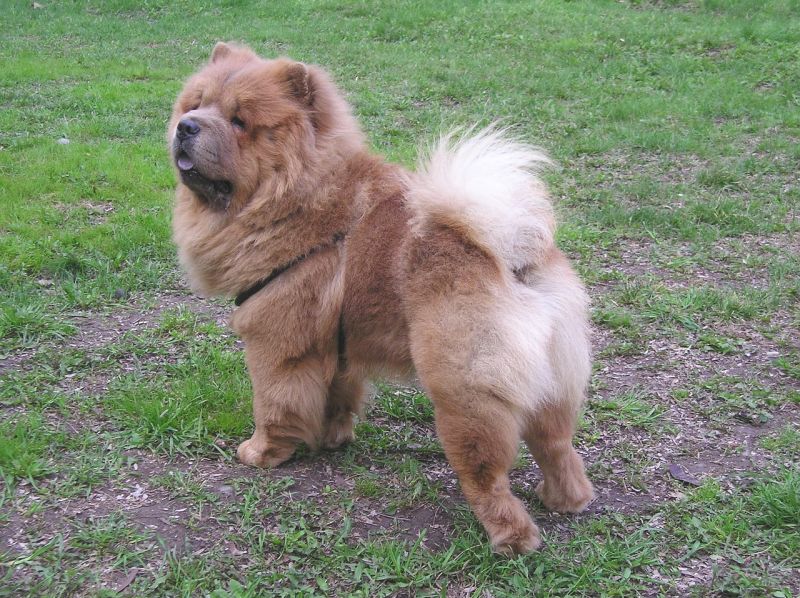
Hailing from China, the chow chow is an ancient breed well-known for his bushy coat and blue tongue.
This coat keeps him cozy in snowy weather but is too dense for spending time outside in the heat.
He needs to be brushed a few times a week, and special attention should be taken with keeping his coat clean and mat-free, as he is prone to skin issues. Shedding can be heavy seasonally.
Chows are guard dogs by nature, and they need early socialization to let them know that not every visitor is coming to steal their treats.
He’s also got a legendary stubborn side, so we don’t recommend him for new dog owners. Puppy training is a must, but don’t expect your chow to always respond to your wishes. Daily exercise and time with his favorite humans will keep him happy.
9. Pomeranian
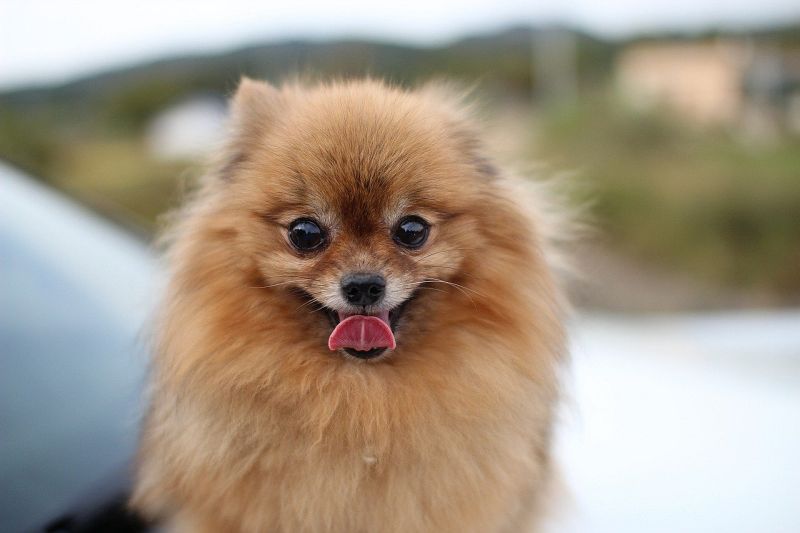
Pomeranians are the smallest member of the spitz family, but they have big-dog personalities.
A Pom’s thick coat stands on end and has a dense undercoat, giving him a puffy appearance and protecting him against the cold. He should be brushed every few days to stay fabulous, and Pomeranian owners can expect regular shedding.
A Pom’s teeth also need special care, as toy breeds are prone to dental problems. Brush them when you comb your puppy’s hair, and your Pom will learn to accept the ritual along with regular grooming.
Poms and Pomeranian mixed breeds are exceptional apartment dogs and only need a daily walk or two to meet their needs.
He can be yappy, however, so teach him manners from an early age to avoid disrupting your neighbors. He should be socialized as soon as his shots are up to date to prevent a standoffish nature.
Training a Pom is of average difficulty, but they can be hard to housebreak. Poms are not recommended for families with small children because of their fragile nature.
10. Schipperke
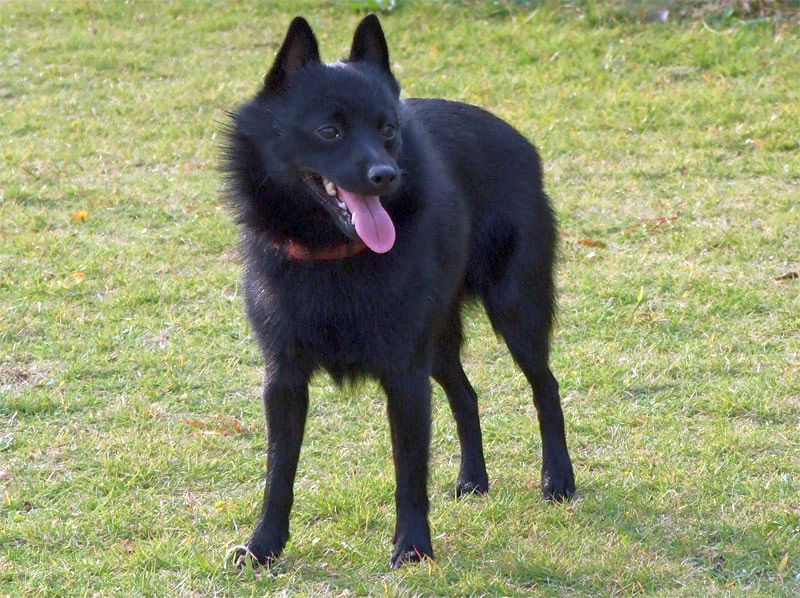
This Belgian boy looks like a small black fox, but we promise he’s 100 percent adorable doggo. Schipperkes were bred as watchdogs for barges, with their dense coat protecting them from the cold breeze off the water while they made their rounds.
His fluffy coat requires only a weekly brushing to prevent tangles and keep its sheen.
Meaning “little captain,” schipperkes are actually more eager to be your skipper, loving nothing more than spending time with their pawrents.
He’s a great pick for a family dog, but he’s not the best pick for apartment life despite his size. He has a tendency to bark — a lot. While his vocal solos are lovely, your neighbors might not agree.
He is also a fan of doing his own thing, making training a challenge. He’s cute, but he’s not the best pick for a newbie dog owner.
11. Bouvier des Flandres
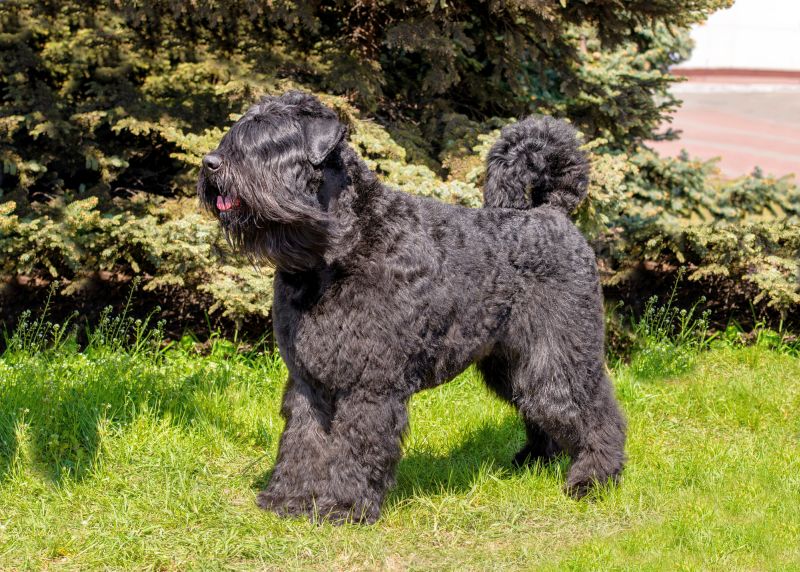
A hardworking farm dog with an enviable beard, the Bouvier des Flandres has a thick coat of coarse hair topped with an eye-hiding bouffant.
Some liken him to a werewolf, but we think he’s just a handsome pupper with a unique look. While he’s beautiful, he requires daily brushing and is a seasonal shedder.
Bouviers are great family dogs and love to be active with their humans, whether he’s pulling a cart around the farm or hiking. He’s a good friend to other doggos, but because of his size, use caution around small kids that might get knocked over.
Bouviers take to training with ease and are friendly. He’s a solid choice for a person with a bit of dog-care experience.
12. Old English Sheepdog
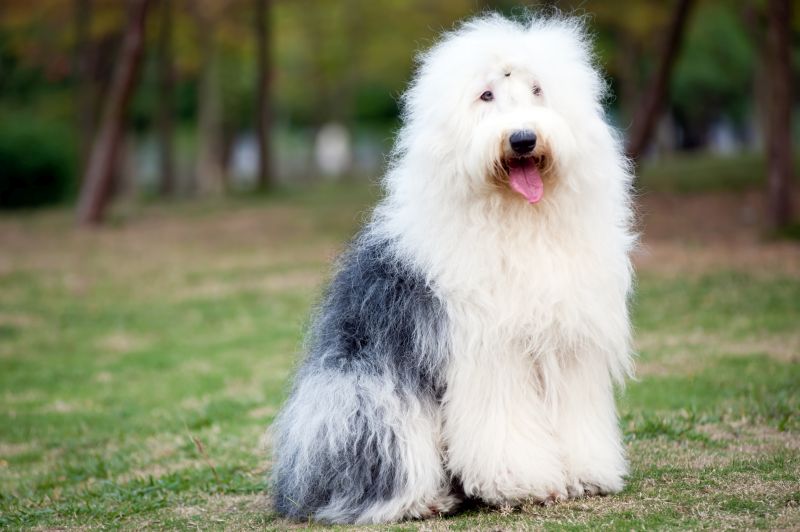
Old English sheepdogs are the quintessential shaggy dog with their dense double coat.
If his coat is kept long, he needs daily brushing of both layers to keep him free of tangles. You’ll also need to monitor his behind to make sure that stays tidy.
Grooming can be made easier by keeping him in a shorter clip, but he still needs brushing throughout the week to maintain his coat’s look. He’s a seasonal shedder and can be prone to eye problems, so check his eyes regularly between vet visits.
Sheepdogs began as a helper around the farm, but he only needs moderate daily exercise to stay content. He does require a daily mental workout, however, or he’ll make his own fun in all sorts of mischievous ways.
Early obedience training is a must, with sheepdogs and sheepdog mixes infamously independent and not suited for beginner dog owners. He’s also unsure of strangers if he isn’t properly socialized.
He’s a good fit for family life, but arrange early meet and greets with other dogs to avoid aggression.
13. Great Pyrenees
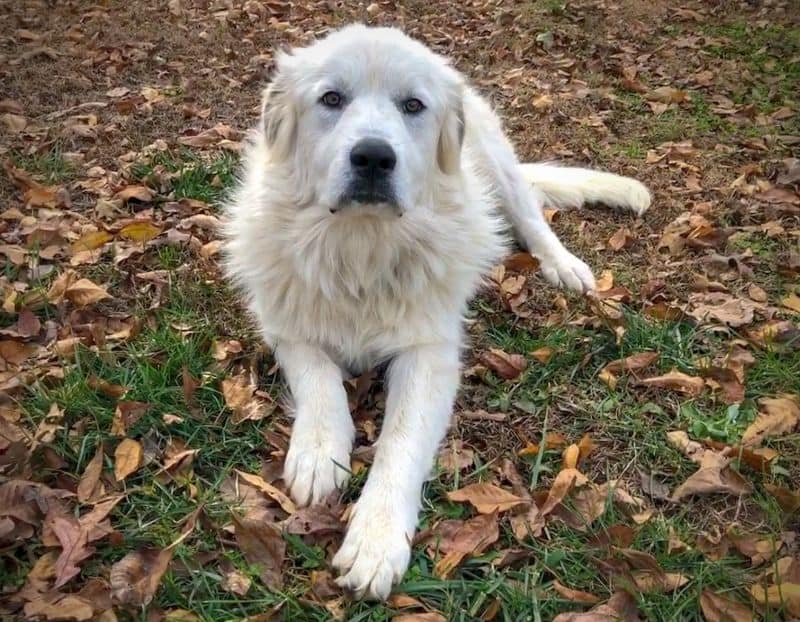
Great Pyrenees are a large livestock guardian breed with a heavy double coat. They’re tough doggos that can handle the trials and tribulations of pasture life with their flock.
Warmer weather isn’t for them though, and you should keep an eye on your Pyr and dry him thoroughly to prevent hot spots under all that fur. Weekly brushing is all he needs, but he is an extreme shedder seasonally.
While he is a hard worker, this big white dog doesn’t have heavy-duty exercise needs. A daily walk will keep him satisfied.
He’s a good choice for family environments, but he can be iffy with strangers if he’s not properly socialized.
Great Pyrenees and Pyrenees mixes are one of the more independent breeds, too, so we wouldn’t recommend him to beginner dog owners.
14. Shetland Sheepdog
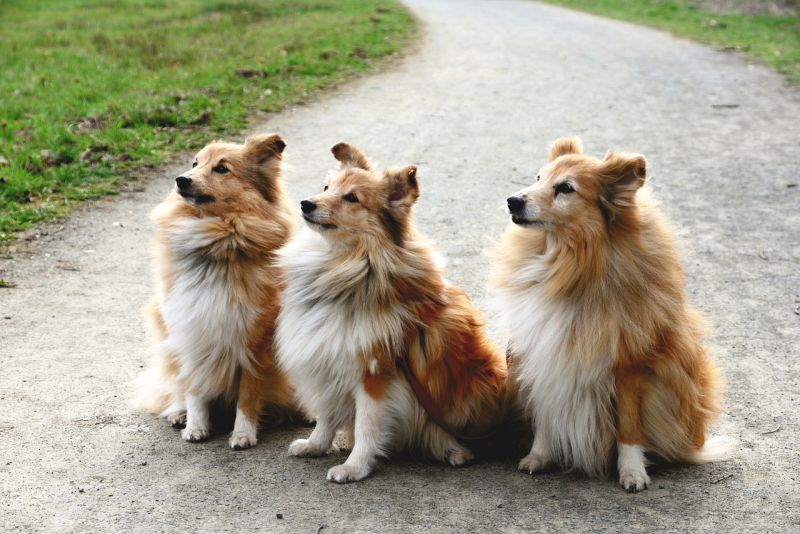
This small sweetheart has a spirit a hundred times his size. Shetland sheepdogs are known just as much for their friendly nature as they are for their fuzzy coat that comes in a rainbow of colors.
Head to tail brushing a few times a week will keep him mat-free, but he sheds year round with heavy seasonal losses blanketing your home in hair puffs.
Shelties originated as farm dogs, so they’re active little guys that require daily exercise. They’re amazing doggo athletes, with agility, obedience, and herding just some sports they excel in.
He’s smart and easy to train, but he likes to chase small animals, so you shouldn’t trust him off-lead. He’s a good pick for families and can work well with novice dog owners.
15. Bearded Collie
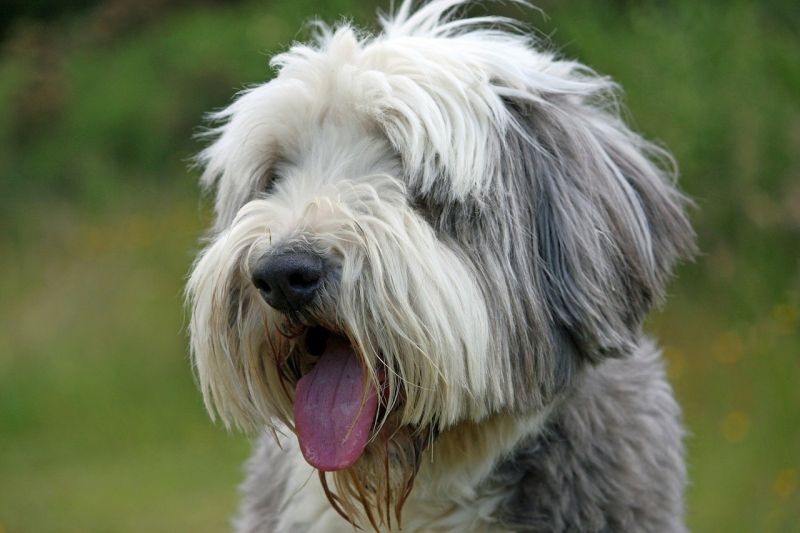
A farm favorite with long, flowing hair, the bearded collie comes from Scotland.
Since he got his start herding cattle, he has a fairly high daily exercise requirement. He’s a great jogging companion and excels when he’s given a job to do.
His signature coat can be a challenge to maintain, with daily brushing a must to prevent mats. You also need to strip dead hair from your beardie. This makes the grooming process lengthy, so hair-haters shouldn’t bring a beardie home.
Beardies, like other collies, make wonderful family dogs. But since he’s a herding breed, you should make sure he’s not corralling your kids around the yard.
He’s a friendly furrykins too and will happily greet guests (both human and doggo) as long as he’s been properly socialized.
He can be stubborn, though, making him not the best pick for a newbie.
16. Havanese
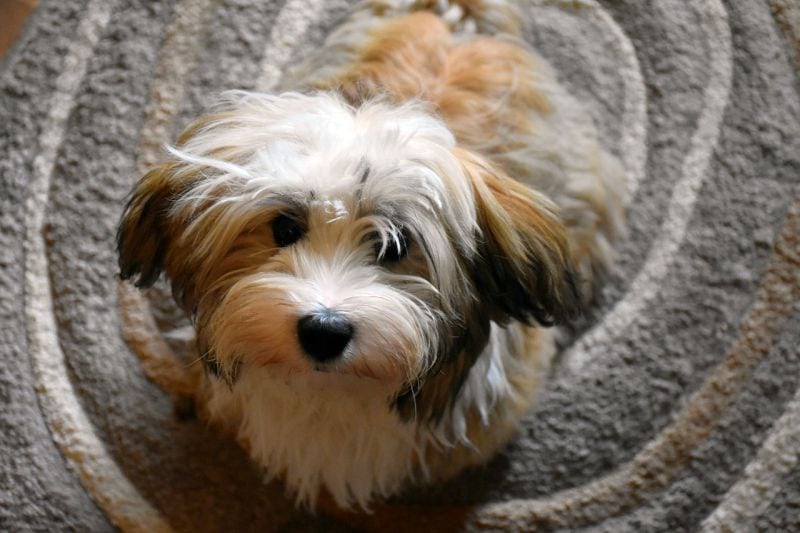
This petite Cuban cutie is a lover of laps. The Havanese has a plush coat that comes in many colors. He can be kept long or shorn short to make grooming easier.
Daily brushing is recommended to prevent tangles, and frequent trims around back should be prioritized to keep him feeling fresh.
He sheds occasionally and needs a daily romp around the yard to burn off energy, but he can live in an apartment if he gets a daily walk and plenty of indoor play.
The Havanese is a joyful spirit who can never meet a stranger, making him a great choice for families with kids and other animals. He’s relatively easy to train, too, which means he’s a good pick for a beginner that doesn’t mind his above-average grooming needs.
17. Poodle
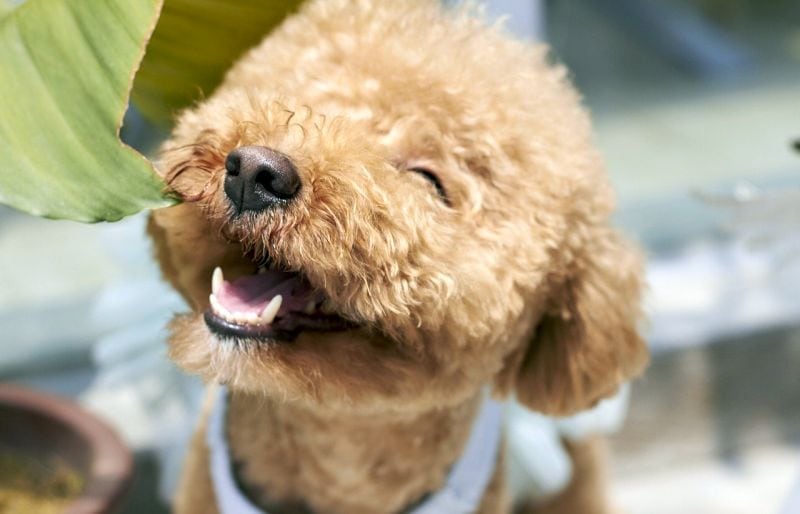
Coming in three sizes (toy, miniature, and standard), the poodle is a favorite in the fluffy dog world.
Rocking a tightly curled coat that can be styled in seemingly endless ways, the poodle requires extensive grooming.
Daily brushing is needed to prevent mats, and professional clipping is recommended every four to six weeks to keep his coat manageable. However, poodles shed very little, which saves you from too much fuzz around the house.
Outside of their high grooming requirements, poodles are easy to care for. They’re smart dogs that actively seek to make their owners happy, which means they’re ideal picks for beginners who don’t mind grooming costs.
Poodles and poodle mixes are generally friendly pups too, so they fit in well with families and households with other pets. Toy poodles are fragile though, ruling them out for families with small kids. Poodles need daily exercise, but you can meet this with a brief walk and indoor play.
18. Soft Coated Wheaten Terrier

An Irish export, the soft coated wheaten terrier is as pleasant to cuddle as his name suggests. Equipped with a plush coat, he doesn’t shed that often, but he needs daily brushing to keep mats away.
Originally a farm dog, he requires daily exercise beyond indoor play. A tired wheaten is a happy wheaten, as these tenacious terriers can get into trouble if they’re bored. He has a strong prey drive, too, and isn’t recommended for households with small furry members.
The wheaten fits in best with active families, but he isn’t a dog for novice owners. He is independent, and he will push your buttons. Start his training early and keep it positive, and you’ll be rewarded with a good boy that listens most of the time.
19. Pekingese
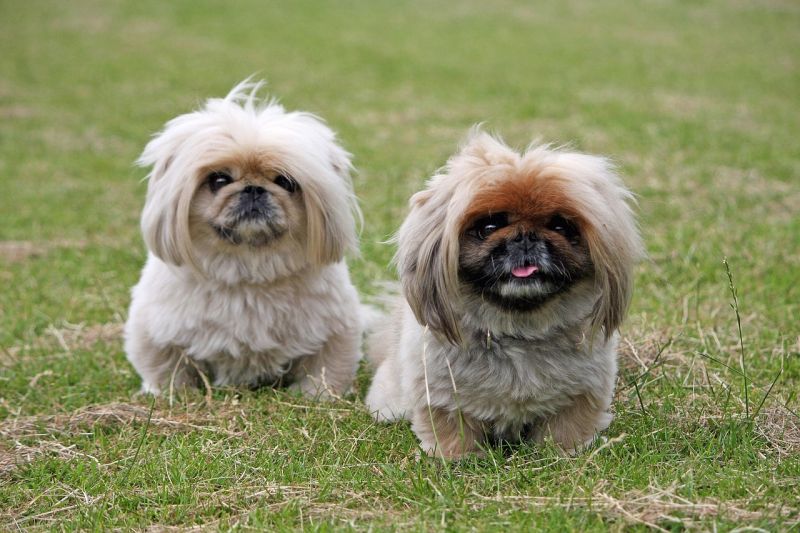
This lowrider lapdog can look more like a fluffy ottoman than a dog at times.
The Pekingese has a thick double coat with a noticeable mane and tail. This hair will grow to the floor and tangles easily, making frequent combing and trims essential in keeping him clean.
If he isn’t a show dog, you’re better off going for a more manageable cut, as their back end can get very messy if not free of hair.
Pekes make excellent apartment dogs since they require little exercise and are beloved for their affectionate nature. Watch him closely in warm weather since these short-faced cuties can struggle to breathe if it gets too hot.
His large eyes can be prone to injury, too, so roughhousing with other pets isn’t recommended.
The Peke isn’t for newbies, and he isn’t the biggest fan of kids, either. He’s one of the more stubborn breeds and can be difficult to train.
Getting a Fluffy Dog Breed: Things to Think About
Now we know that fluffy dog breeds are adorable, but there are several things to seriously consider before adding one to your family:
- Climate: Fluffy pups with thick double coats struggle in the heat, and should never be left outside for long in high temperatures. When it’s hot, they’ll need to hang out in air-conditioning and should only spend brief periods outside. Indoor exercise alternatives are recommended. Also consider a cooling dog bed or cooling vest to help keep you furry pooch comfortable.
- Grooming: Many fluffy breeds require professional grooming every few weeks, which gets pricey. You can learn to groom your floof yourself, but the grooming tools and equipment you’ll need is expensive and the regimen takes a lot of time. Whether you choose to clip or not, you’ll still need to brush your fuzzy friend regularly to prevent matting.
- Allergies: People with pet allergies can struggle with fluffy doggos. While dander and saliva generally trigger someone’s allergies to dogs, shed hair can spread both around the house. Hair is also a trap for other allergens like dust and mold spores from outside, further aggravating other allergies. Consider purchasing a vacuum that specializes in picking up dog hair.
- Shedding: All dogs shed, but fluffy dogs can leave legendary tumbleweeds around the house. This means hair on your couch, floors, clothes, and even your dishes.
- Hygiene: While puffy puppers are cute, poopy bottoms are not. Fluffy dogs can easily acquire one if their backdoor area isn’t kept neatly groomed in a sanitary trim. Even if it is trimmed, a sour tummy can leave the entire area a disaster, including their legs. Your doggo might also roll in something outside, which can make his long, luscious locks less than easy to clean.
- Health: Keeping a floofer feeling his best isn’t always easy, especially when it comes to avoiding skin issues, like hot spots. Dense coats up the risk of these painful skin ailments, making proper drying, monitoring, and grooming a must.
***
Do you have any of the fluffy breeds we mentioned? Do you have another? Tell us about them in the comments and let us know what you love most about your floofy friend!
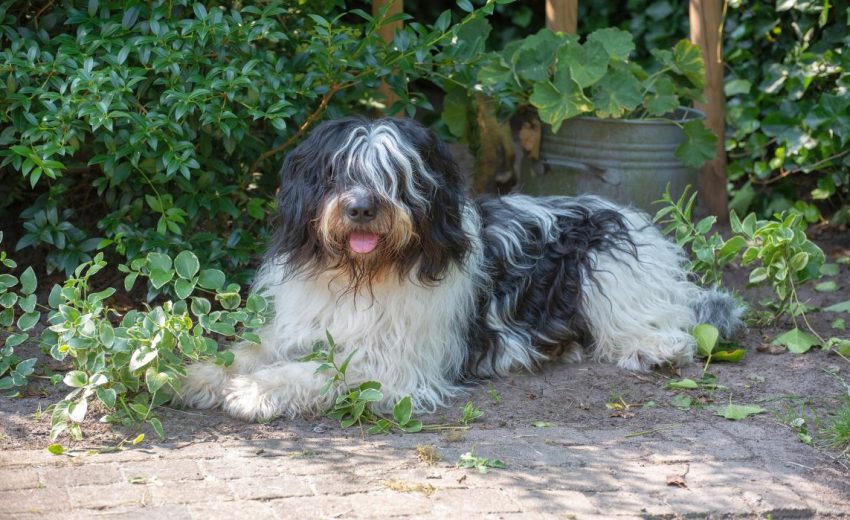
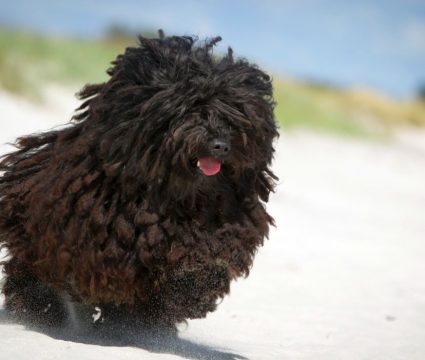
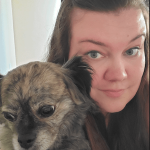


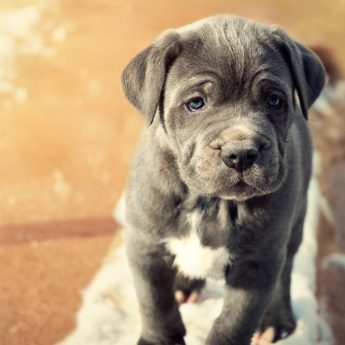

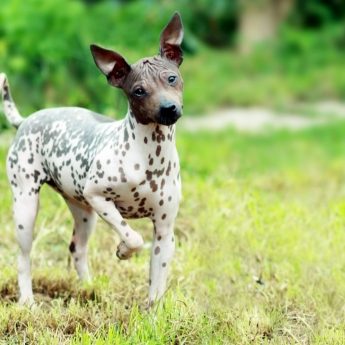
No Comments